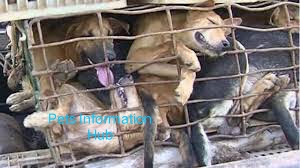Introduction
The dog meat trade is a distressing and controversial practice that exists in various parts of the world. In countries where this trade persists, dogs are often subjected to unimaginable suffering, cruelty, and inhumane conditions. However, there is a growing movement of individuals and organizations dedicated to saving dogs from the meat trade, providing them with care, and advocating for their rights. In this article, we will explore the efforts being made to rescue and protect these animals, highlighting the importance of raising awareness and supporting initiatives that aim to end the dog meat trade.

The 9 main steps of saving dogs from the meat trade are:
Understanding the Dog Meat Trade
- Overview of countries involved in the dog meat trade.
- Methods of sourcing dogs for the trade.
- Inhumane practices and conditions in the industry.
Cruelty and Injustice Faced by Dogs
- The brutal process of dog slaughter.
- Transportation and confinement in cramped conditions.
- Psychological and physical trauma experienced by dogs.
Rescuing Dogs from the Meat Trade
- Local and international rescue organizations.
- Covert operations and rescue missions.
- Providing medical care, rehabilitation, and shelter.
Rehabilitation and Rehoming Efforts
- Physical and emotional rehabilitation of rescued dogs.
- Socialization and training programs.
- Finding forever homes for rehabilitated dogs.
Advocacy and Awareness Campaigns
- Working with local communities and governments.
- Lobbying for legal reforms and stricter regulations.
- Promoting alternative livelihoods for those involved in the trade.
Collaborations and Partnerships
- International organizations supporting local initiatives.
- Funding and resource allocation for rescue operations.
- Building networks and sharing best practices.
Challenges and Obstacles
- Cultural beliefs and traditions surrounding dog meat consumption.
- Lack of government enforcement and weak legislation.
- Safety risks faced by activists and rescuers.
Success Stories and Impact
- Rescued dogs finding loving homes.
- Decrease in dog meat consumption in certain regions.
- Shifting public opinion and support for anti-dog meat campaigns.
How You Can Help
- Supporting reputable rescue organizations.
- Donating funds, supplies, or volunteering time.
- Sharing information and raising awareness on social media.
Conclusion
Rescuing dogs from the meat trade is a compassionate and urgent mission that requires global support and advocacy. By raising awareness, supporting rescue organizations, and working towards legal reforms, we can collectively make a difference in the lives of these innocent animals. Let us stand together and strive to end the cruel and inhumane dog meat trade, ensuring that every dog has the chance to experience love, care, and safe life.


0 Comments